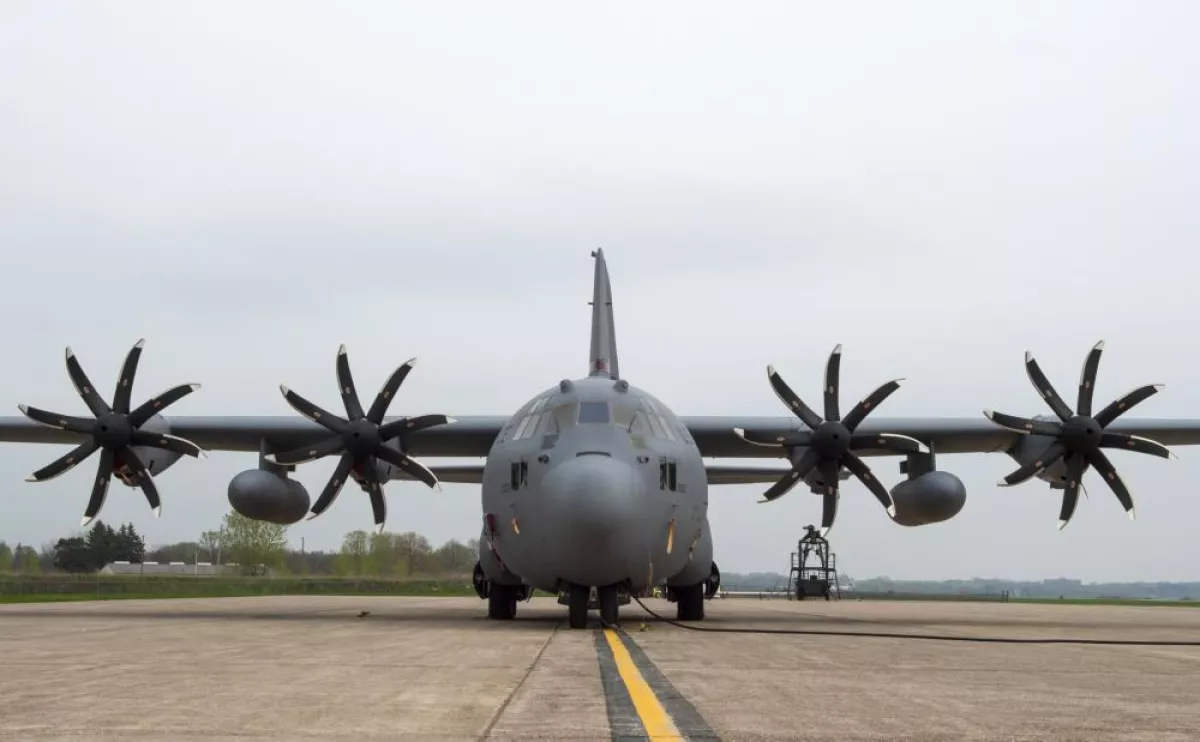Turkish C-130 crash: initial findings, technical theories, global statistics
On November 11, a Turkish military transport aircraft C-130 crashed on Georgian territory while en route from Azerbaijan to Türkiye. As a result of the air disaster, members of the Turkish Armed Forces were killed.
Caliber.Az has received preliminary information regarding some details of the incident. According to initial reports, the aircraft had been waiting at Ganja airport for about two hours. During this period, there were no recorded incidents of external interference or attempts to approach the aircraft. On board were technical service personnel responsible for maintaining F-16 fighter jets participating in a military parade. They completed all standard safety procedures before boarding the aircraft.
The aircraft was carrying mechanical spare parts for F-16s. According to available information, there were no explosives on board.
In addition, the preliminary inspection of the wreckage revealed no external signs of impact. For comparison, when the AZAL passenger plane was previously shot down, through-and-through damage to the fuselage was immediately visible. In this case, no such signs were present, which increases the likelihood of a technical cause of the crash.
According to initial theories, two possible causes are being considered.
The first theory is related to the age of the aircraft. The C-130 had been in service for a long time and underwent an overhaul in 2020. Corrosion could have led to the failure of structural components or fuselage panels. This scenario has been seen before in global aviation: in the United States, a plane of the same type previously crashed due to corrosion-related damage.

The second theory concerns the cargo being transported. If containers or individual components were not securely fastened, they could have shifted during flight and struck internal parts of the fuselage. Such impacts could theoretically deform the structure, which in a critical situation could compromise its integrity and lead to a loss of control.
Locating the “black boxes” is not expected to be difficult, as the aircraft crashed on flat terrain rather than in mountainous or forested areas. This means that accurate data on the flight parameters and the crew’s voice recordings can be expected in the near future.
The investigation is being conducted by Georgia and Türkiye. Azerbaijan, in turn, has been providing full support to its brotherly nation from the very first moments. This is yet another example of close cooperation and allied relations.
Statistics of known C-130 crashes: What global experience shows
C-130 aircraft have been in operation for over 60 years and come in a wide range of civilian and military variants. Over the years, several serious incidents involving these aircraft have been recorded worldwide. According to open sources, the most notable cases include:
September 2, 1958: An American C-130 was shot down over Soviet airspace near Yerevan. 17 people were killed.
March 28, 1972: In Laos, an American AC-130A was shot down by a surface-to-air missile. Casualty figures are not available.
October 14, 1987: In Angola, a Zimex Aviation L-100-30 aircraft was shot down shortly after takeoff in a conflict zone. No data on casualties is available.
October 5, 1991: An Indonesian Air Force C-130 crashed near Jakarta due to an engine fire after takeoff. 133 people were killed.
September 26, 1992: In Nigeria, a C-130 crashed near Lagos following multiple engine failures. 159 people were killed.
February 26, 1996: A Sudanese Air Force aircraft crashed near Jabal Awliya. 91 people were killed.
February 11, 2014: An Algerian Air Force C-130 crashed in Aïn Kercha due to a collision with the ground in poor weather. 77 people were killed.
June 30, 2015: In Medan, Indonesia, a KC-130B crashed after an engine failure, hitting a residential area. 122 people were killed, and 17 more on the ground.
October 2, 2015: Near Jalalabad, Afghanistan, a C-130J crashed during takeoff. 14 people were killed.
May 2016: In the Medan area, an Indonesian Air Force C-130 experienced an operational accident. No casualty figures are available.
September 29, 2020: In Thermal, California, an American KC-130J collided mid-air with an F-35 during refuelling. The crew survived.
July 4, 2021: On Holo Island (Sulu, Philippines), a Philippine Air Force C-130 lost control during a go-around. 50 people were killed, and 3 more on the ground.
July 29, 2023: In Colombia, a C-130 of the country’s Air Force was damaged in an operational incident. No casualties were reported.
November 11, 2025: On the Türkiye–Georgia border, a Turkish Air Force C-130 broke apart in flight. The investigation is ongoing, and preliminary reports indicate around 20 people were on board.
May 27, 1961: At Ramstein Air Base (USA), a C-130 crashed during landing due to the failure of one engine. Casualty data is unavailable.
February 15, 1971: At the McMurdo Antarctic Station, a US Navy LC-130F was damaged while taxiing when a wing struck a snow wall. No casualties.
June 28, 1983: North of Nellis Air Force Base (USA), a US Air Force C-130 lost lift during a low-altitude manoeuvre and crashed. Casualty data is unavailable.

The causes of most known C-130 accidents are related to technical malfunctions, engine failures, crew errors, overloading, and structural damage. There have also been cases of in-flight fuselage breakups or crashes during training flights.
Thus, global statistics indicate that the C-130 is a reliable and widely used aircraft. However, risks increase with high airframe hours, metal fatigue, lapses in maintenance, or improperly secured cargo.
The final conclusion will be determined by the “black boxes” and technical examination. Since the crash occurred on open terrain, investigative teams are operating without obstacles. Once the flight recorders are analysed, all flight parameters—speed, altitude, engine configuration, and aircraft control in the final moments—will be established. This will allow the precise cause of the tragedy to be determined.
Caliber.Az extends its deepest condolences to the families of the victims and to the brotherly people of Türkiye.








